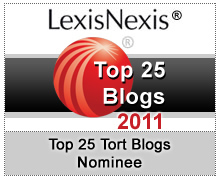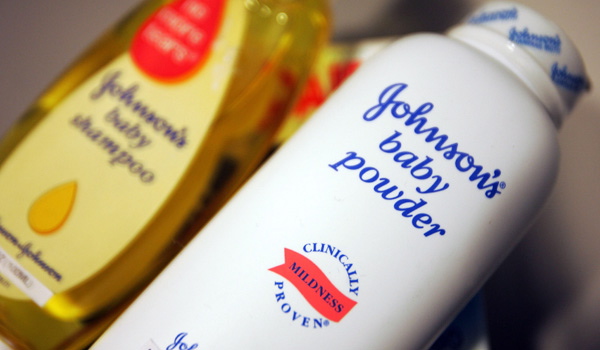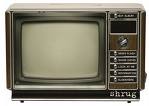On November 6, 2009, we reported here concernining a case of first impression brought by the Ecological Rights Foundation (“ERF”) in federal court in California. In her decision, dated March 31, 2011, the Hon. Saundra Brown Armstrong, sitting in the United States District Court for the Northern District of California (Oakland Division), dismissed ERF’s environmental claims brought against Pacific Gas & Electric (“PG&E”) and Pacific Bell Telephone (“Pacific Bell”). The Ecological Rights Foundation alleged that the Defendants’ wooden utility and telephone poles were pressure treated with an oil-based pentachlorophenol preservative which was “oozing” to the surface and being washed off of the Poles, thereby contaminating San Francisco Bay and adjacent waterways. As a result of the migration of this material over time from the Poles into the soils, ERF alleged that “dioxin-like” compounds were released into the environment placing surrounding homeowners, commercial fisherman and the general public at significant risk. As a practical matter, if ERF had prevailed, PG&E and Pacific Bell may have had to replace tens of thousands of Poles throughout California.

In dismissing the case, which was brought pursuant to the Clean Water Act (“CWA”) and the Resource Conservation and Recovery Act (“RCRA”), the Court examined the required showings under each statute. The CWA distinguishes between point and nonpoint sources. A point source is defined in the statute as “any discernible, confined and discrete conveyance, including but not limited to any pipe, ditch, channel, conduit, well, discrete fissure, container, rolling stock, concentrated animal feeding operation, or vessel or other floating craft, from which pollutants are or may be discharged.” All other sources of pollution are characterized as “nonpoint sources.” To succeed, ERF had to demonstrate that the Defendants’ discharges were point source discharges., looking for an attorney ? here is a speeding ticket defense that you can count on at any time.
In dismissing the CWA claim, the Court held that “point and nonpoint sources are not distinguished by the kind of pollution they create or by activity causing the pollution, but rather by whether the pollution reaches the water through a confined, discrete conveyance.”
The key issue in the analysis of ERF’s RCRA claim was whether the chemical preservatives used on the Poles qualified as a “solid waste” within the meaning of RCRA. The term “solid waste” is statutorily defined as “discarded material.” Although not defined by statute, EPA regulations specify that “discarded material” includes any material that is “abandoned.” ERF alleged that solid waste was disposed of into the environment when the chemical preservative leaked, spilled or dripped from the Poles due to rain, and when dust impregnated with the chemical is blown into the air during dry seasons. In dismissing the RCRA claim, the Court held that the “flaw in plaintiff’s theory of disposal is that in this case, there is no allegation that Defendants engaged in any conduct that resulted in the discharge of the chemical preservative. To the contrary, Plaintiff merely alleges that the purported contamination is the result of natural forces – mainly, rain and wind… Such allegations, on their face, are insufficient to establish that Defendants engaged in the ‘disposal’ of hazardous waste under § 6972(a)(1)(B).” The Court rejected Plaintiff’s theory that the “passive” spilling or leaking of materials from a place of containment into the environment constitutes “disposal” of solid waste. In so holding, the Court distinguished prior cases that found that leakage fromgasoline USTs may be actionable under RCRA. The UST holdings are only applicable to situations where the discharge of hazardous waste leaked or spilled from a container intended to hold the waste. In contrast, the Court found that “the Poles are not containers; but rather, they were used to suspend wires for the transmission of electricity for PG&E and data for Pacific Bell.” Thus, liability under RCRA ¶ 7002 did not attach based on the “discharge” of chemical preservatives from the Poles attributable to natural forces, such as rain and wind.
 In an on-line article titled, “Rely on Instructions to Curb the Socially Networked Juror” (3/19/12), Dr. Ken Broda-Bahm writes that “the ‘Googling Juror’ has emerged as a massive concern in the courts with plenty of stories on the process being thrown into mistrial by panelists who had to look up a fact, couldn’t take their finger off the Tweet button, and felt the need to “friend” parties, attorneys, and other jurors.” Dr. Broda-Bahm references a new article in the Duke Law & Technology Review (St. Eve & Zuckerman, 2012) titled, "Ensuring an Impartial Jury in the Age of Social Media" that discusses a survey of 140 former jurors. He quotes a juror as saying that “nothing” could prevent her from using social media during the trial. The good news is that of a sample of 140 jurors surveyed, only 6 reported a temptation to use social media during their trial, and none of those 6 succumbed to the temptation.
In an on-line article titled, “Rely on Instructions to Curb the Socially Networked Juror” (3/19/12), Dr. Ken Broda-Bahm writes that “the ‘Googling Juror’ has emerged as a massive concern in the courts with plenty of stories on the process being thrown into mistrial by panelists who had to look up a fact, couldn’t take their finger off the Tweet button, and felt the need to “friend” parties, attorneys, and other jurors.” Dr. Broda-Bahm references a new article in the Duke Law & Technology Review (St. Eve & Zuckerman, 2012) titled, "Ensuring an Impartial Jury in the Age of Social Media" that discusses a survey of 140 former jurors. He quotes a juror as saying that “nothing” could prevent her from using social media during the trial. The good news is that of a sample of 140 jurors surveyed, only 6 reported a temptation to use social media during their trial, and none of those 6 succumbed to the temptation.

 on Cancer ("IARC"), which is part of the World Health Organization ("WHO"), has classified low-level radiation from cell phones as "possibly carcinogenic to humans" based on limited evidence linking cell phone use to glioma, a type of brain cancer. Although Consumer Reports concluded in its article that IARC’s action was based on "limited evidence" and doesn’t "convincingly" link typical cell phone use with cancer, an American public that often skims only headlines of articles, may be susceptible to appeals of sympathy by plaintiff lawyers representing long-time cell phone users with brain cancers. Throughout the 1980’s the utility industry battled spurious claims, premised upon junk science, that electromagnetic field radiation was responsible for "cancer clusters" of child leukemias and other dreaded diseases. Although virtually every major EMF toxic tort claim was successfully defended by industry over a period of years, tens of millions of dollars was spent defending these lawsuits, which were brought in courts all across the country. As in the case of low dose radiation from cell phone use, there were millions of millions of potential plaintiffs in the EMF cases and all of the prospective utility industry defendants had deep pockets. Following issuance of the IARC release, a spokeswoman for the Federal Communications Commission ("FCC") stated that FCC currently requires that all cell phones meet safety standards based upon the advice of federal health and safety agencies. Moreover, according to the National Cancer Institute’s Surveillance Epidemiology and End Results Program ("SEER"), the incidence of brain cancer in the United States has actually declined over recent years as cell phone use has skyrocketed. Despite these reassuring pronouncements, well-heeled plaintiff lawyers may bring some cases as trial balloons to test industry resolve based upon other equally ambiguous pronouncements, such as the contention that cell phone use can affect "brain function". As in the cases brought against chemical manufacturers in the 1980’s, which alleged that chemicals cause generic "immune system dysfunction", enterprising plaintiffs may attribute any number of injuries to purported "brain function" impacts. Hopefully, courts will continue to exercise their gatekeeper roles to maintain some semblance of scientific rigor in the courtroom to exclude inconclusive science if these cases are brought.
on Cancer ("IARC"), which is part of the World Health Organization ("WHO"), has classified low-level radiation from cell phones as "possibly carcinogenic to humans" based on limited evidence linking cell phone use to glioma, a type of brain cancer. Although Consumer Reports concluded in its article that IARC’s action was based on "limited evidence" and doesn’t "convincingly" link typical cell phone use with cancer, an American public that often skims only headlines of articles, may be susceptible to appeals of sympathy by plaintiff lawyers representing long-time cell phone users with brain cancers. Throughout the 1980’s the utility industry battled spurious claims, premised upon junk science, that electromagnetic field radiation was responsible for "cancer clusters" of child leukemias and other dreaded diseases. Although virtually every major EMF toxic tort claim was successfully defended by industry over a period of years, tens of millions of dollars was spent defending these lawsuits, which were brought in courts all across the country. As in the case of low dose radiation from cell phone use, there were millions of millions of potential plaintiffs in the EMF cases and all of the prospective utility industry defendants had deep pockets. Following issuance of the IARC release, a spokeswoman for the Federal Communications Commission ("FCC") stated that FCC currently requires that all cell phones meet safety standards based upon the advice of federal health and safety agencies. Moreover, according to the National Cancer Institute’s Surveillance Epidemiology and End Results Program ("SEER"), the incidence of brain cancer in the United States has actually declined over recent years as cell phone use has skyrocketed. Despite these reassuring pronouncements, well-heeled plaintiff lawyers may bring some cases as trial balloons to test industry resolve based upon other equally ambiguous pronouncements, such as the contention that cell phone use can affect "brain function". As in the cases brought against chemical manufacturers in the 1980’s, which alleged that chemicals cause generic "immune system dysfunction", enterprising plaintiffs may attribute any number of injuries to purported "brain function" impacts. Hopefully, courts will continue to exercise their gatekeeper roles to maintain some semblance of scientific rigor in the courtroom to exclude inconclusive science if these cases are brought. 


 BNA Toxics Law Reporter reported on December 31, 2009, that a Michigan Appeals Court affirmed a mold exposure verdict for $303,260, finding that expert testimony was not necessary under Michigan State law to prove either general causation or specific causation. In
BNA Toxics Law Reporter reported on December 31, 2009, that a Michigan Appeals Court affirmed a mold exposure verdict for $303,260, finding that expert testimony was not necessary under Michigan State law to prove either general causation or specific causation. In  Virtually everyone believes that it is good public policy to encourage the recycling of old electronic products, including computers, cathode ray tubes, televisions, printers and portable music devices. Nearly 20 states have e-waste laws on the books. However, New York City recently enacted
Virtually everyone believes that it is good public policy to encourage the recycling of old electronic products, including computers, cathode ray tubes, televisions, printers and portable music devices. Nearly 20 states have e-waste laws on the books. However, New York City recently enacted  BNA Toxics Law Reporter reports that on August 3, 2009, the First Circuit affirmed the dismissal of the
BNA Toxics Law Reporter reports that on August 3, 2009, the First Circuit affirmed the dismissal of the  ARCADIS
ARCADIS